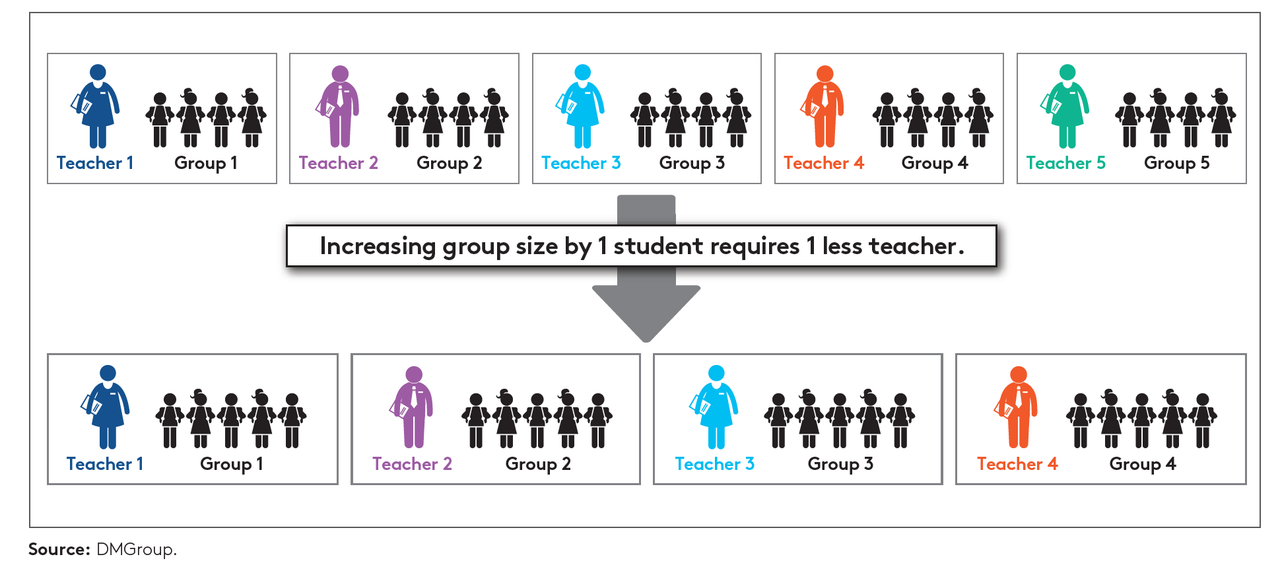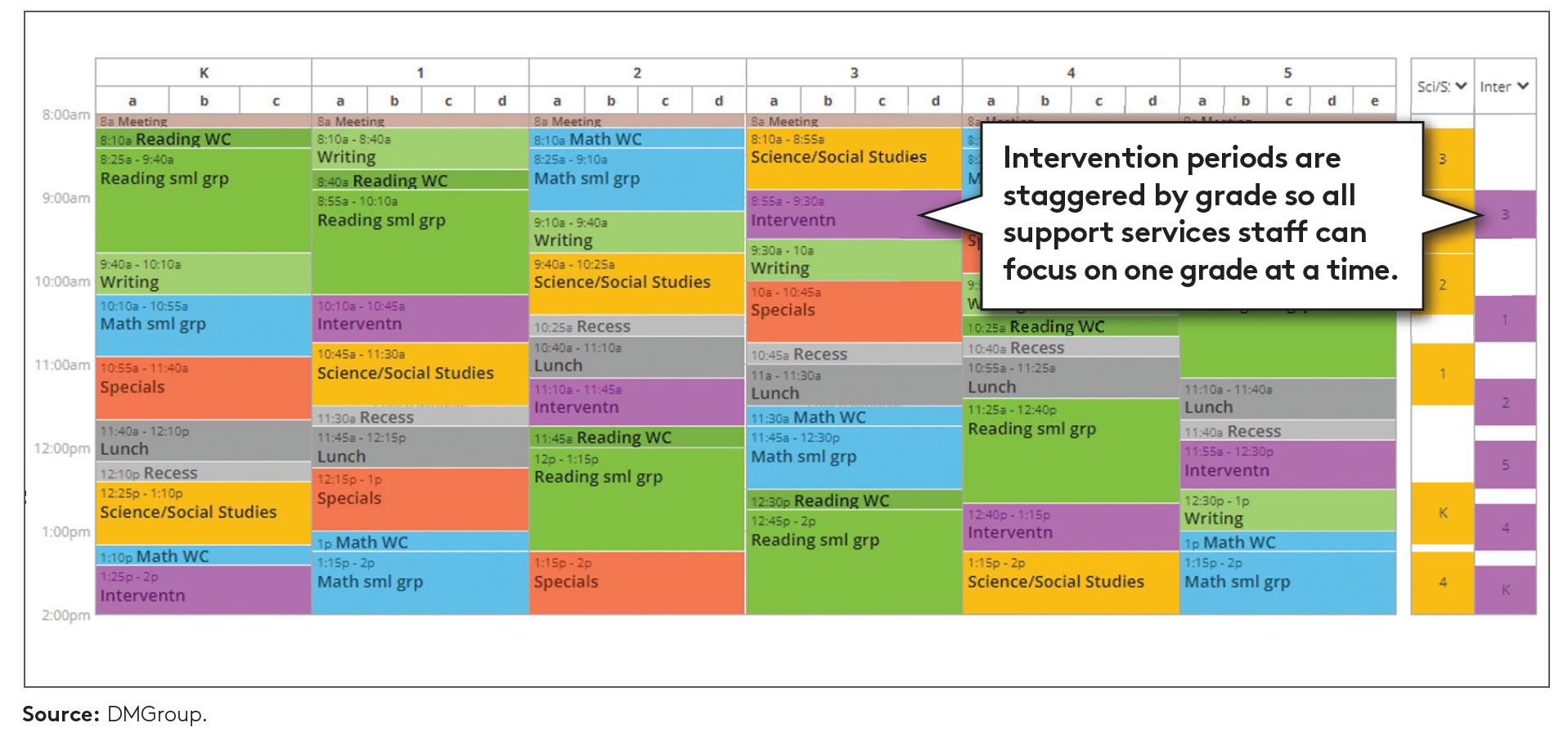
Implementing Student Interventions with DMSchedules for Elementary Schools
A transparent and data-driven plan for supporting students who need additional assistance is essential in elementary schools. This is where MTSS (Multi-Tiered System of Supports), a framework that empowers schools to provide targeted interventions, comes into play.
Schools with an effective MTSS plan start conducting diagnostic assessments at the beginning of the year to create targeted intervention plans. This data enables educators to group students at various levels and provide them with specific support. However, the process of completing observations and gathering and analyzing data manually can be extremely time-consuming and can potentially divert resources away from the students who need help the most. Moreover, the development of personalized intervention plans for each student requires careful consideration and collaboration among the educational team, as well as evaluation of available staff and their strategic allocation according to the student's needs.
Using DMSchedules for Elementary School scheduling software, educators can get visibility into available resources, ensure that interventions are appropriately matched with the most qualified staff, monitor the effective use of their time, and make adjustments as needed.
DMSchedules: A Game-Changer for Principals
DMSchedules for Elementary Schools Scheduling Software is a powerful elementary school scheduling tool designed around scheduling best practices, such as intervention and enrichment. The software provides principals with the ability to strategically plan and schedule interventions that maximize staff time and student reach. With the software, school leaders have a comprehensive view of how the workload is distributed and make better allocations of staff and resources. DMSchedules offers evidence of any scheduling challenges or staffing issues that may have posed barriers to teaching and learning and helps create effective intervention plans.
How to Use the Intervention/Enrichment (I/E) Blocks Effectively
A daily intervention block prevents students from being routinely pulled out of core instruction and missing critical time with their homeroom teachers and peers in order to receive extra support. For students who are struggling in reading and math, a daily intervention block provides an opportunity to close the gap by receiving extra time for practice, reinforcement, and re-teaching of material in addition to core classroom instruction. Here we share some best practices that can be achieved using our powerful DMSchedules for Elementary Schools scheduling software:
Scheduling a grade-level intervention block
Having a common grade-level schedule that allows intervention and small-group instruction to take place at the same time allows students to be efficiently regrouped across classrooms by area of need. Effective and efficient regrouping can have a profound impact on the reach and impact of staff and makes it possible for student needs to be matched with the teacher best qualified to meet those needs. Having a grade-level intervention block can reduce the number of staff required to provide these services and can produce better outcomes for students (Exhibit 1). It also allows each grade’s homeroom teachers to have common planning time opportunities every day during interventions.
Exhibit 1: Optimize student grouping across classrooms by area of need

“Flooding” Schedule
Staggering the intervention periods of each grade enables support services staff to “flood” each grade through the day—meaning all support services staff can be directed toward one grade at a time (Exhibit 2).

The typical process involves several key steps to support student learning. Initially, student groups are identified based on their specific needs across classrooms. These groups are then carefully assigned to the most qualified teachers who specialize in the relevant area of focus. Scheduling intervention and small-group instruction blocks allows teachers to go from grade to grade through the day to cover all students.
Make frequent assessments and adjustments
Every six to eight weeks, an assessment of student growth and needs based on data takes place, leading to group adjustments. Students who have successfully mastered the targeted area of focus either exit intervention or transition to the next area to be mastered. This structured approach facilitates ongoing support and tailored education for all students.

Create Successful Intervention Plans with DMSchedules
DMSchedules for Elementary Schools Scheduling Software simplifies the intervention planning process by providing a user-friendly platform for educators to plan strategically. Educators are empowered to allocate time and resources more effectively and ensure that interventions are matched with the most qualified teachers, optimizing the impact of support services. The drag-and-drop feature in DMSchedules adds a layer of simplicity to the scheduling process. Educators can easily assign interventions by dragging and dropping elements within the software. This user-friendly feature saves time and reduces the learning curve, allowing educators to focus on designing effective interventions rather than grappling with complex scheduling procedures. By providing tools for equitable resource allocation and timely interventions, DMSchedules supports a comprehensive approach to meeting the diverse needs of all students, fostering an inclusive educational environment, and ensuring that no child is left behind.
Interested in learning more about DMSchedules for Special Education scheduling software? Contact us.
